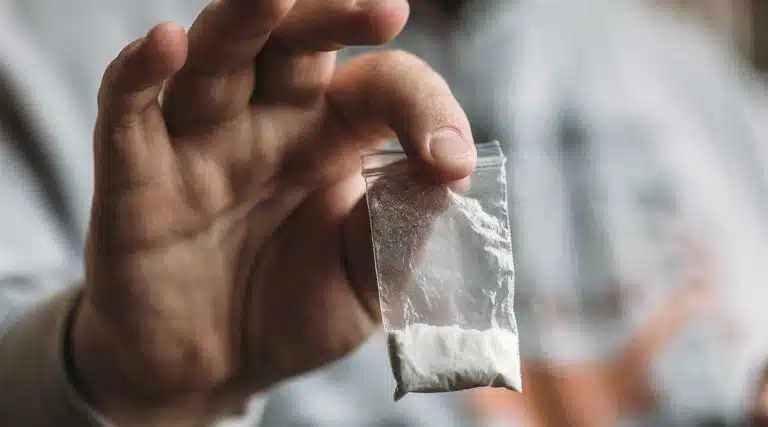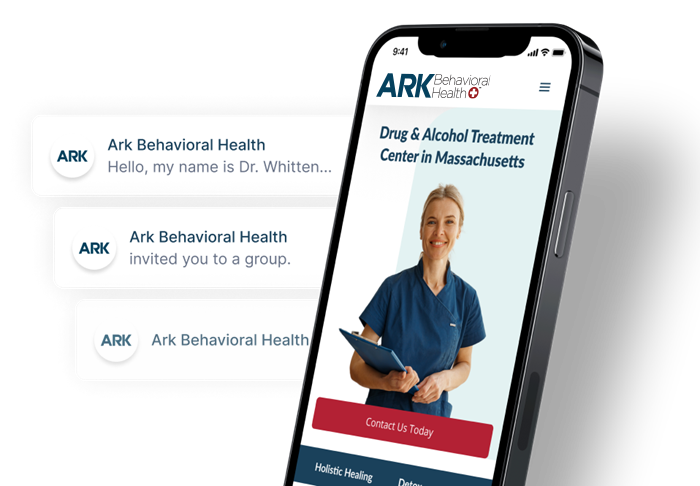Heroin Addiction | Abuse, Overdose, Withdrawal, & Treatment Options
- Effects Of Heroin Abuse
- Heroin Overdose Risk
- Withdrawal Symptoms
- Heroin Addiction
- Addiction Treatment
- Heroin FAQ

Heroin is an opioid drug that works similarly to prescription painkillers like oxycodone (Oxycontin), hydrocodone (Vicodin), or morphine.
While prescription opioid overdoses have decreased in the last few years, heroin overdoses have increased steadily in the United States since 2010.
Many people who abuse heroin became addicted to prescription opioids first and turned to heroin as a cheaper and more widely available alternative.
Abusing heroin can quickly lead to dependence, addiction, and devastating health consequences.
Effects Of Heroin Abuse
Heroin is a highly addictive drug that changes the way your mind works. It alters the brain’s reward system, leading you to crave the drug and to have difficulty finding the same pleasure in healthy activities.
How Heroin Is Abused
The most common way to abuse heroin is by injection, which shoots it directly into your bloodstream. Black tar heroin is a sticky or hard substance that is usually melted down and injected. White powdered heroin can be smoked or snorted but is often injected as well.
Injection drug use comes with several risks, including collapsed veins and abscesses (swollen, pus-filled skin). Diseases like HIV and Hepatitis C can be transmitted through shared heroin needles, and unclean syringes may also cause a bacterial infection in the skin or heart.
Smoking heroin (heating the powder on tinfoil and inhaling its vapor) is harmful to the lungs. Snorting the drug can lead to severe nasal damage and tissue erosion.
Long-Term Health Effects
Long-term heroin abuse can result in other health issues, no matter how you use it. Abusing heroin increases the chance of mental health problems like depression and antisocial personality disorder. It may also cause disease in the liver, kidneys, and lungs.
If you become addicted, you’re even more likely to experience negative health effects and overdose.
Heroin Overdose Risk
There were nearly 15,000 heroin-related overdose deaths in the U.S. in 2018. A heroin overdose occurs when you take too much at once or take it repeatedly. The accumulation of the drug in your system can slow down your central nervous system so much that you stop breathing.
Heroin overdose signs include:
- pinpoint pupils
- bluish skin and nails
- difficulty breathing
- loss of consciousness
A lack of oxygen to the brain and body can cause permanent brain damage or death.
Learn more about Heroin Overdose
Dangerous Heroin Drug Combinations
You could overdose on heroin even if you’re careful. Since it’s a street drug, it isn’t monitored like prescription drugs are. It’s often laced with impurities and sometimes with stronger drugs, like fentanyl. Fentanyl is an opioid that looks like heroin, and only a few grains of it can kill you.
Some people combine heroin and cocaine, a stimulant, to balance out the sedating effects of heroin. This practice, called “speedballing,” can lead you to take too much of one or both drugs.
Learn more about The Dangers Of “Speedballing“
Mixing heroin with depressant drugs, like alcohol or other opioids, also increases the risk of overdose.
Heroin Overdose Reversal Medication
Heroin overdose may be reversed by naloxone (Narcan) if it’s caught early enough. Naloxone blocks opioid receptors to prevent the body from shutting down if you overdose.
Many pharmacies across the U.S. offer naloxone over-the-counter in an effort to reduce opioid overdose deaths.
Heroin Withdrawal Symptoms
Prolonged heroin abuse usually leads to physical dependence. Your body starts to expect heroin and relies on it to operate normally. If you’ve become physically dependent, you’ll experience withdrawal symptoms if you stop using the drug.
Heroin withdrawal symptoms may include:
- muscle pain
- insomnia
- diarrhea
- vomiting
- leg twitches
- goosebumps
The intensity of withdrawal symptoms depends on how much heroin you take, how long you’ve been taking it, and how quickly you stop, as well as other factors.
While rarely life-threatening, the heroin withdrawal process can be so uncomfortable that it leads to relapse. A strong support system—and possibly a detox program—can help ease the process.
Heroin Addiction Symptoms
Heroin addiction often accompanies physical dependence, but addiction is a disease of the mind rather than the body. The way heroin affects the brain can make it nearly impossible to stop using it, even if you see that the drug is ruining your life.
Some symptoms of heroin addiction are:
- loss of interest in things you once loved
- secretive behavior; hiding drug use
- stealing money from loved ones to buy heroin
- job loss or financial difficulties from drug use
- strained relationships
- poor health and hygiene
Addiction usually causes a shift in priorities, in which heroin is more important than anything else. Even if you try to hide your addiction, it won’t be long before it shows through in your health, lifestyle, and relationships.
Learn more about the Warning Signs & Symptoms Of Heroin Addiction
Heroin Addiction Treatment
Heroin addiction isn’t easy to overcome alone. Most people need an inpatient treatment program that works through the causes and effects of addiction and encourages a healthier life.
Heroin addiction treatment may begin with medical detox, which safely monitors you as you go through the withdrawal process.
You might continue with medication-assisted treatment (MAT), which has been proven effective for opioid addiction. Many people continue to have cravings after detox, which get in the way of recovery success. MAT consists of medication and behavioral therapy for whole-person healing.
Three FDA-approved medications for treating heroin addiction are:
- Buprenorphine, which reduces withdrawal symptoms by acting on opioid receptors. It’s often used with naloxone (Suboxone) to prevent abuse.
- Methadone (Methadose), a mild opioid that cuts cravings and soothes withdrawal symptoms without producing a high.
- Naltrexone (Vivitrol), a monthly shot that prevents opioids from having any effect in the brain.
Other treatment methods may include yoga, art therapy, counseling, and support groups. The best heroin rehab programs are tailored to your individual needs, giving you the best chance at lasting recovery.
Learn more about Heroin Addiction Treatment
To learn about our personalized treatment plans for heroin addiction, contact an Ark Behavioral Health specialist today.
Heroin FAQ
What Is Gray Death?
Gray death (or grey death) is an extremely dangerous substance that contains a mixture of opioids. The specific opioids vary from mixture to mixture, but most forms of gray death include heroin, fentanyl, carfentanil, and U-47700.
Learn more about Gray Death
Can You Snort Heroin?
Heroin can be abused by snorting, smoking, or injecting. Snorting heroin may seem like a safer alternative to injecting, but it can cause several dangerous health complications. Snorting can lead to severe nasal damage, lung infections, addiction, and overdose.
Learn more about Snorting Heroin
What Happens When You Smoke Heroin?
When you choose to smoke heroin, you’re inhaling the drug as a vapor which first enters your lungs followed by the bloodstream and then the brain.
Once heroin enters the brain it is converted into morphine and attaches to opioid receptors, causing a euphoric rush within fifteen minutes of the drug being smoked. However, smoking heroin can lead to physical dependence, addiction, and a range of long-term health effects.
Learn more about Smoking Heroin
What Are Heroin Track Marks?
Track marks are scars caused by repetitive intravenous drug use. They may appear as discoloration, puncture wounds, or linear scars near the site of injection. Some scars may appear as circular and indented, which are caused by skin popping.
Learn more about Heroin Track Marks
What Is Black Tar Heroin?
Black tar heroin is a type of heroin that looks like roofing tar. It’s dark brown to black and either sticky or hard. It poses a number of serious health risks, including lung damage, wound botulism, addiction, and overdose.
Learn more about Black Tar Heroin
How Long Does Heroin Stay In Your System?
Heroin is metabolized quickly and can be out of your system in as little as 15 minutes. However, its metabolites can linger for up to 22.5 hours after you last used.
Several factors can cause heroin to last longer in your system and show up on a drug test, including metabolism, health, and frequency of use.
Read How Long Does Heroin Stay In Your System to learn more
What Is Heroin Called On The Street?
Common street names for heroin include Big H, Smack, Junk, Dope, Horse, and Hell Dust.
In addition, some people use street names based on heroin type and appearance. For example, white heroin is often called Snowball, White Stuff, or China White, while brown or black heroin is called Dirt, Mud, or Chocolate.
There are also street names for heroin mixed with other drugs.
Learn more about Heroin Street Names
What Is Heroin Cut With?
Heroin is often cut with caffeine, paracetamol, sugar, and starch. These cutting agents, along with others like fentanyl, can cause significant and dangerous effects on how the drug works in the body.
Learn more about Heroin Cutting Agents
Where Does Heroin Come From?
Heroin comes from morphine. Morphine is a natural opiate made from the opium poppy plant.
After opium is extracted from the poppy plant, it can be boiled with lime and processed into morphine. The morphine can then be further processed into heroin.
The heroin-making process requires ingredients like acetic anhydride, chloroform, sodium carbonate, activated charcoal, and alcohol.
Learn more about How Heroin Is Made
How Much Does Heroin Cost?
Heroin costs vary depending on factors like purity, type, and availability. In general, though, a bag of heroin (which contains about one-tenth of a gram of heroin) costs between $5 and $25.
Prescription opioids are much more expensive. That’s why people often turn to heroin when they can no longer fund their prescription opioid addictions.
Learn more about Heroin Street Prices
Is There A 12-Step Program For Heroin Addiction?
Heroin Anonymous is a 12-step program for heroin addiction based on the program of Alcoholics Anonymous. Heroin Anonymous believes helping others stay sober is one of the keys to long-term recovery.
Learn more about Heroin Anonymous & 12-Step Recovery
What Does Heroin Look Like?
The purest version of the drug is a fine white powder with a bitter taste. However, heroin is also available as a more or less fine brown powder, and as a dark-colored hard or sticky substance known as black tar heroin.
Learn more about Identifying The Different Types of Heroin
What Does Heroin Feel Like?
Taking heroin can feel relaxing and pleasing. It can also make you feel drowsy and nauseous. The severe side effects of heroin can feel much less pleasant, and even be life-threatening.
Learn more about What A Heroin High Feels Like
What Is Cheese Heroin?
Cheese heroin is the slang term for black tar heroin that’s mixed with over-the-counter medications like Tylenol. It’s called “cheese” because the substance has a orange or yellow appearance.
Learn more about Cheese Heroin
Where Is The Heroin Triangle?
The Heroin Triangle is a group of suburbs near Atlanta, Georgia. It begins north of Atlanta, extends northwest to Marietta, east to Alpharetta, Duluth, and Johns Creek, and then southwest to Sandy Springs.
Between 2010 and 2016, heroin-related deaths in these areas increased by 3,844 percent.
Learn more about The Heroin Triangle
What Does Heroin Smell Like?
On its own, heroin usually does not have a smell. When heroin is mixed or “cut” with additives, it may take on a strong vinegar or burnt smell.
To learn more, read What Does Heroin Smell Like?
What Do Heroin Pupils Look Like?
A side-effect of heroin use is pupil contraction (heroin pupils). After the drug enters the bloodstream the black central portion of the eye tends to shrink noticeably, especially when the drug is taken in larger doses.
The outer portions of the eye may also appear red, irritated, or droopy.
Learn more about Heroin Eyes
How Many Heroin Deaths Occurred In 2020?
From July 2019 to July 2020, there were about 14,000 deaths due to heroin overdose. The data for the rest of 2020 is still incomplete.
Learn more about Heroin Deaths
What Celebrities Have Died From Heroin Use?
Famous heroin deaths (often in combination with other drug or alcohol abuse) include Janis Joplin, Amy Winehouse, River Phoenix, Cory Monteith, John Belushi, and Philip Seymour Hoffman.
Learn more about Famous People Lost To Heroin Addiction
Why Does Heroin Make You Itch?
Heroin and other opioids activate nerve fibers that send a signal to the brain that induces itching. Along with opioid receptors, heroin also activates receptors associated with the immune system that causes the production of histamines.
Histamines are a chemical produced in the body to fight off allergies, which can cause severe itching.
To learn more, read Why Does Heroin Make You Itch?
What Are Some Examples Of Heroin Paraphernalia?
Typical heroin paraphernalia will likely vary depending on how the drug is used:
- If the drug is injected, common paraphernalia may include burnt spoons, syringes, needles, belts, and shoelaces.
- If the drug is smoked, expect scorched tinfoil, lighters, and straws or tubes.
- If the drug is snorted, expect rolled paper or dollar bills and razors blades.
Learn more about Identifying Heroin Paraphernalia
What Is Fake Heroin?
Fake heroin is a term for heroin that actually contains fentanyl, a far more potent and deadly synthetic opioid drug.
Fentanyl is around 50 times stronger than heroin by weight, and fentanyl overdoses in the United States are rising rapidly.
Learn more about Fake Heroin
How Does Heroin Affect Sex Drive?
In the short-term, heroin may increase feelings of pleasure, leading some to engage in risky sexual behaviors which can impact sexual health or intimacy with your partner. Long-term heroin use may result in erectile dysfunction in men or abnormal menstrual cycles in women.
Learn more about The Effects Of Heroin On Sex & Intimacy
Can Heroin Expire?
Certain fungi growth may be possible if heroin isn’t stored at room temperature or cooler. If stored properly, the drug may keep its potency years later and no growth may occur.
To learn more, read Does Heroin Expire?
What Happens When You Shoot Up Heroin?
When you shoot heroin, you liquify a drug of uncertain purity and inject the entire dose directly into your body. This results in a sudden, intense high with an elevated risk of overdose.
Shooting up heroin can lead to skin damage, incurable infections, brain damage, and severe physical dependence and addiction.
How Common Is Relapse After Quitting Heroin?
According to the National Institute on Drug Abuse, 40 to 60 percent of people with drug addictions, including heroin addiction, relapse or start using the drug again.
Recovery services like medication-assisted treatment, therapy, and support groups can help you or your loved one avoid relapse. However, relapse is normal and does not mean you failed in recovery.
Is It Safe To Taper Off Heroin?
With the right treatment plan, it can be safe to taper off heroin. These plans often involve prescribing another substance in place of heroin, and then tapering off that substance over time.
There is still debate on how long tapering schedules should go on. No single schedule will work for everyone. You should work with your doctor or a treatment program to find the timeline that works best for you.
What’s The History Of Heroin?
Diamorphine, also known as heroin, was originally developed from morphine in the late 1800s.
While heroin enjoyed widespread international use in the early 1900s and was initially regarded as a legal wonder drug, it soon became clear that it was dangerously addictive and harmful. Most nations either outlawed or heavily regulated heroin use in the decades that followed.
What’s The Link Between Heroin & Depression?
There is a comorbidity between heroin use and forms of major depression. Heroin use may lead to depression, and vice versa. Certain risk factors, such as genetics and upbringing, may put you at risk for both of these conditions.
Is It Safe To Quit Heroin Cold Turkey?
While some with heroin addiction can quit cold turkey safely, that is not always the case. Those suffering from addiction are more likely to relapse and even overdose on the drug when they try to quit by themselves.
The safest way to quit heroin is to do so under medical supervision. It provides accountability and makes the process much easier.
What’s It Like To Be A Heroin Addict?
Because heroin addiction changes the brain, people with this disease find it extremely difficult to think of anything besides heroin, even if the drug has led to damaged relationships, job loss, and other negative consequences.
During and after a heroin high, a person may experience side effects like drowsiness, confusion, nausea, intense itching, nervousness, and slowed breathing. They also face a high risk of serious health problems such as depression, HIV, lung problems, and overdose.
Along with health issues, most people with heroin addiction face discrimination and judgment, also known as stigma. They may be wrongfully judged as weak or lazy, even though addiction is a serious disease and not a personal failing.
Is There A Link Between Schizophrenia & Heroin Use?
Schizophrenia is a serious mental illness that affects the way a person thinks, feels, and behaves.
There is little evidence that heroin use can lead to schizophrenia, but chronic heroin use is associated with depression and other mental health concerns. People with schizophrenia may also use heroin to self-medicate psychotic symptoms.
Written by Ark Behavioral Health Editorial Team
©2024 Ark National Holdings, LLC. | All Rights Reserved.
This page does not provide medical advice.
National Institute on Drug Abuse (NIDA) - Heroin DrugFacts
National Institute on Drug Abuse (NIDA) - Heroin Research Report
National Institute on Drug Abuse (NIDA) - Prescription Opioids and Heroin Research Report


Questions About Treatment?
Ark Behavioral Health offers 100% confidential substance abuse assessment and treatment placement tailored to your individual needs. Achieve long-term recovery.
100% confidential. We respect your privacy.
Prefer Texting?
Our friendly support team is here to chat 24/7. Opt out any time.







 Learn More
Learn More








